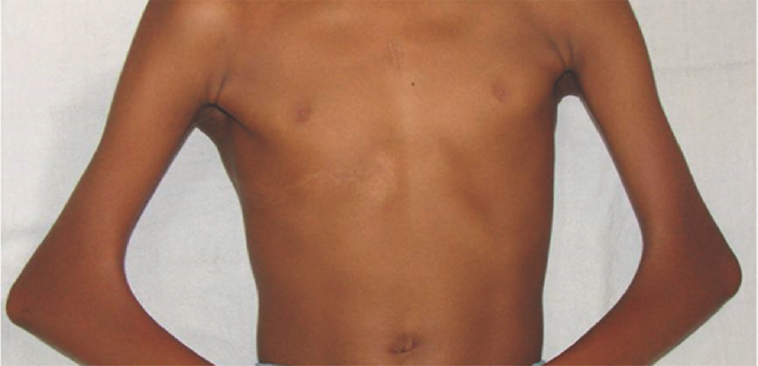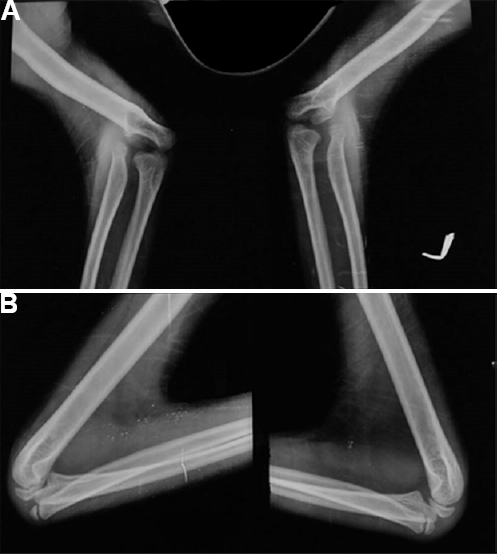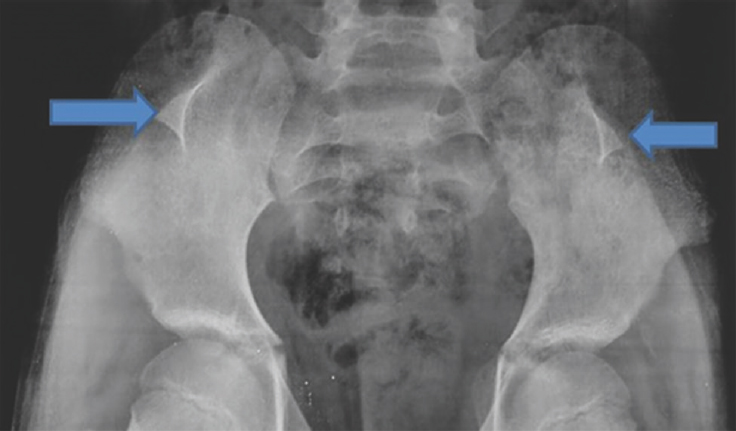Translate this page into:
Nail-patella syndrome
*For correspondence: zskundu2003@rediffmail.com
-
Received: ,
This is an open access journal, and articles are distributed under the terms of the Creative Commons Attribution-NonCommercial-ShareAlike 4.0 License, which allows others to remix, tweak, and build upon the work non-commercially, as long as appropriate credit is given and the new creations are licensed under the identical terms.
This article was originally published by Medknow Publications & Media Pvt Ltd and was migrated to Scientific Scholar after the change of Publisher.
A 12 yr old boy† presented to the outpatient department of Orthopaedics, Pandit Bhagwat Dayal Sharma Postgraduate Institute of Medical Sciences, Rohtak, India, in June 2016, with deformity of both the elbows with flexion contractures. His clinical examination revealed bilateral elbow contracture with webbing - antecubital pterygium (Fig. 1). His nails were mildly dystrophic with slight discolouration in the thumbs, index and middle fingers (Fig. 2). Both patellae were absent. X-rays of both elbows revealed hypoplasia of radial heads and lateral humeral condyles (Fig. 3)and knees with absent patellae (Fig. 4). Radiograph of pelvis showed the presence of bilateral iliac horns (Fig. 5). Based on the clinical and radiographic findings, diagnosis of nail-patella syndrome (NPS) was made. The patient was advised physiotherapy for the elbow contractures.

- Clinical picture showing antecubital pterygium on both sides and flexion contractures.

- Clinical picture showing slight discoloration and dystrophy of nails as mild ridges mainly in the thumbs, index and middle fingers on both sides (arrows).

- X-ray of elbows in (A) anteroposterior and (B) lateral view showing dysplasia of the bilateral radial heads and lateral humeral condyles.

- X-ray of both knees in (A) anteroposterior and (B) lateral view showing the absence of patellae (arrows).

- X-ray of pelvis revealing bilateral iliac horns (arrows).
NPS also called as onycho-osteo-arthrodysplasia or Fong's syndrome is a rare hereditary disorder and characteristically affects the nails, knees, elbows (antecubital pterygium) and iliac horns. In addition, there can be clavicular horn, shoulder girdle dysplasia, congenital absence of fibula and bilateral first rib hypoplasia. The presence of posterior iliac horns is considered pathognomonic of NPS.





